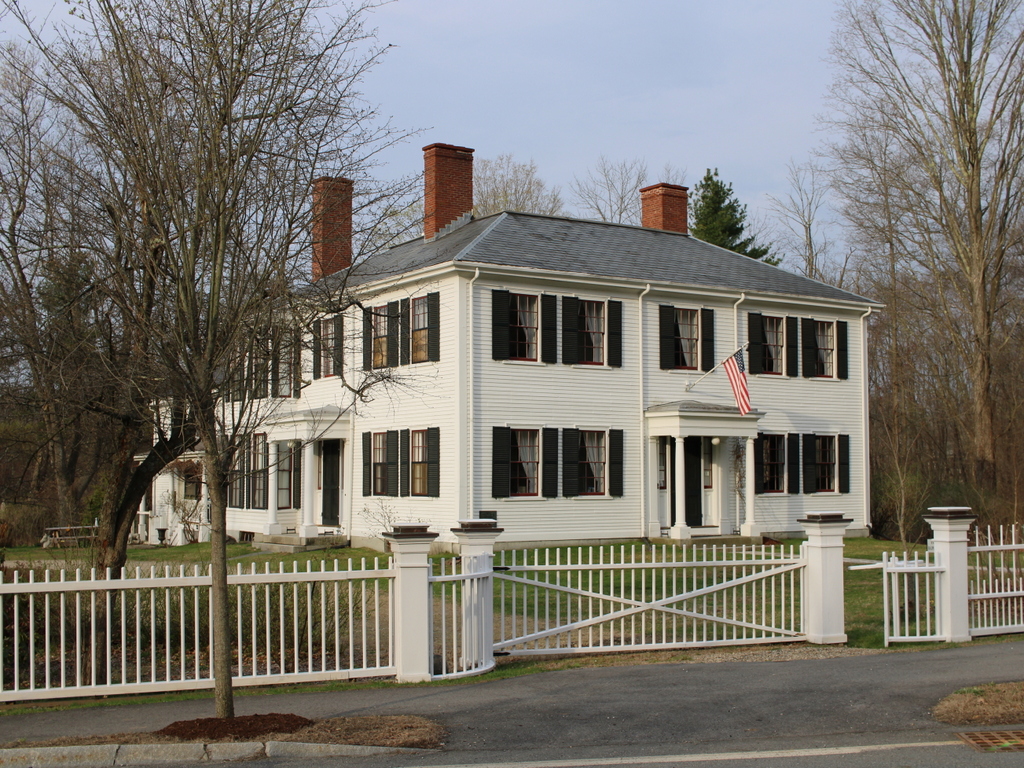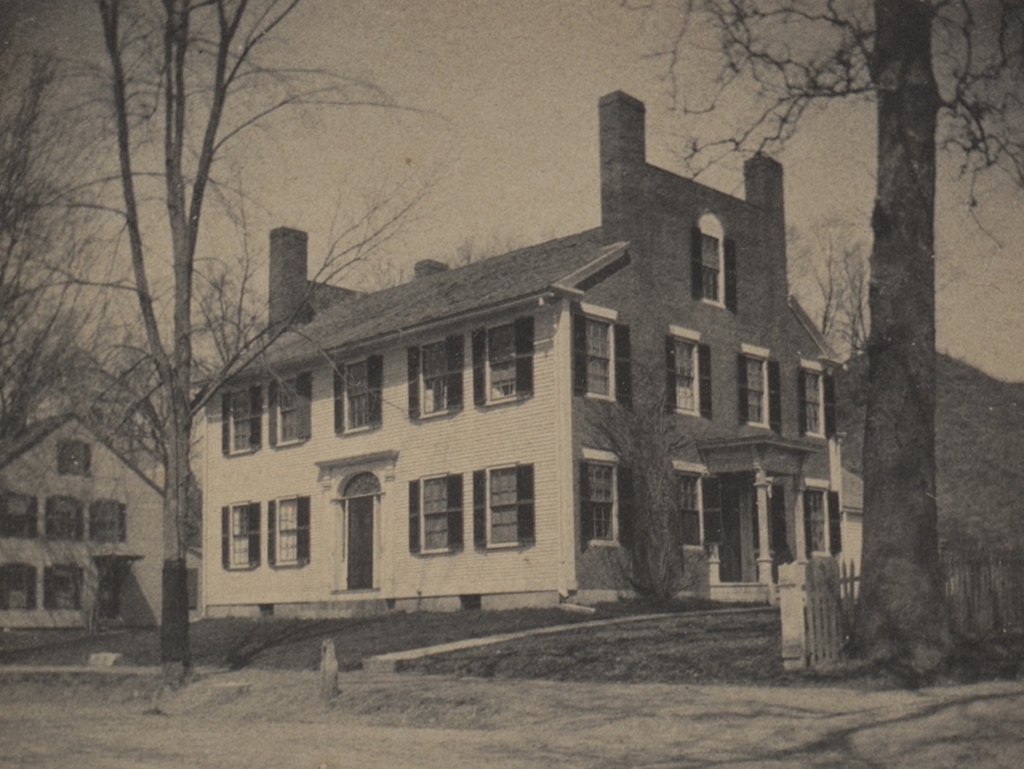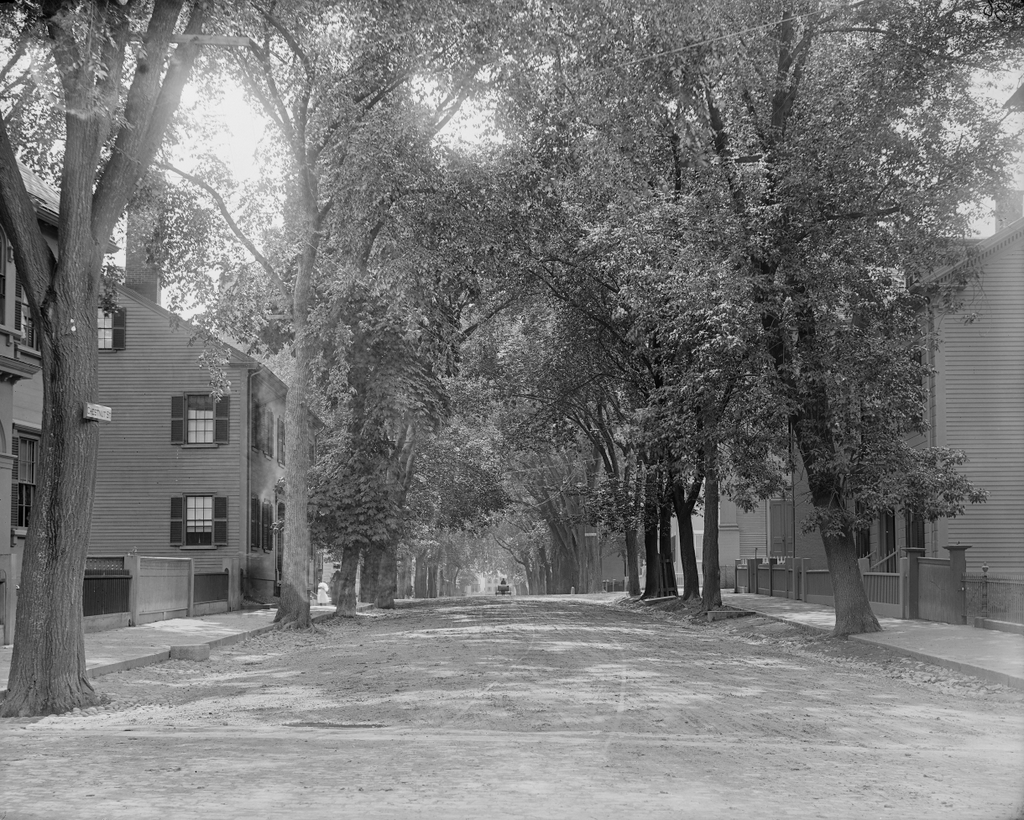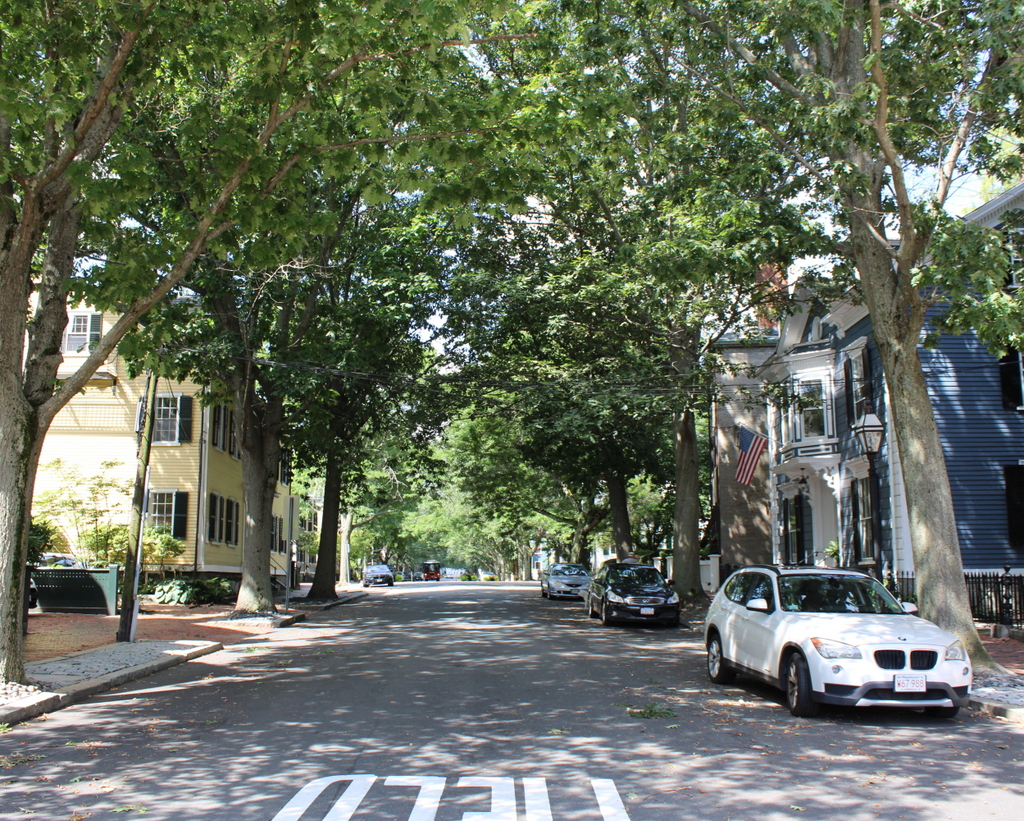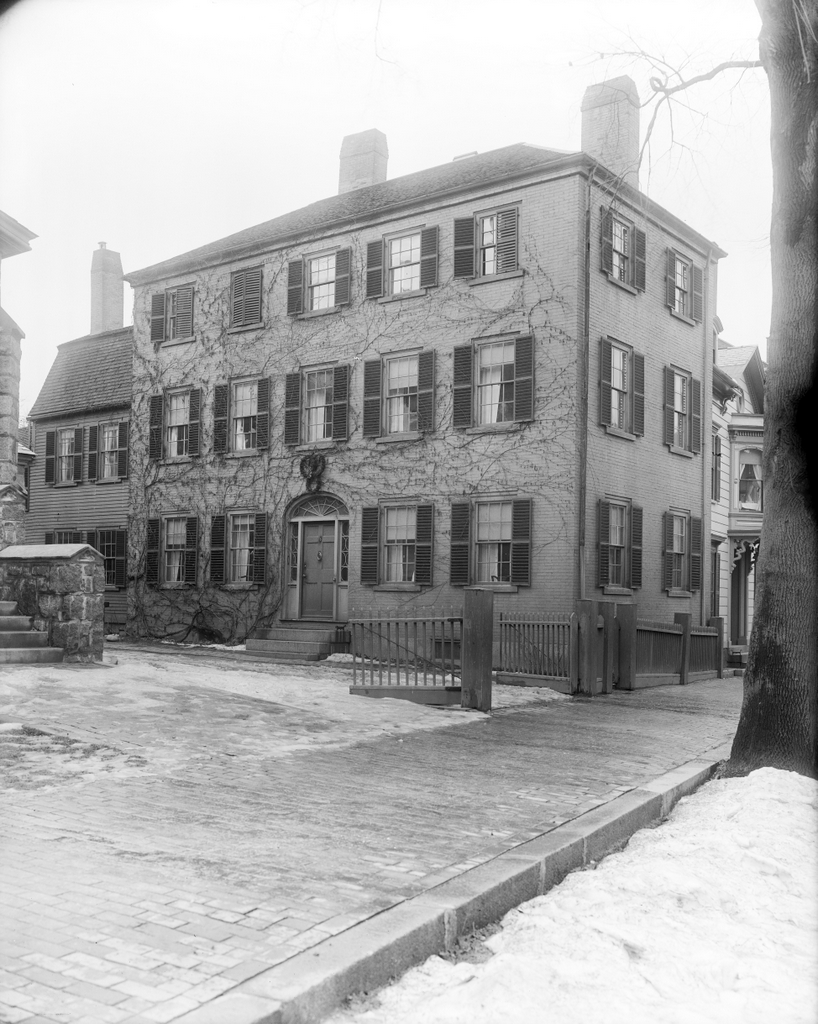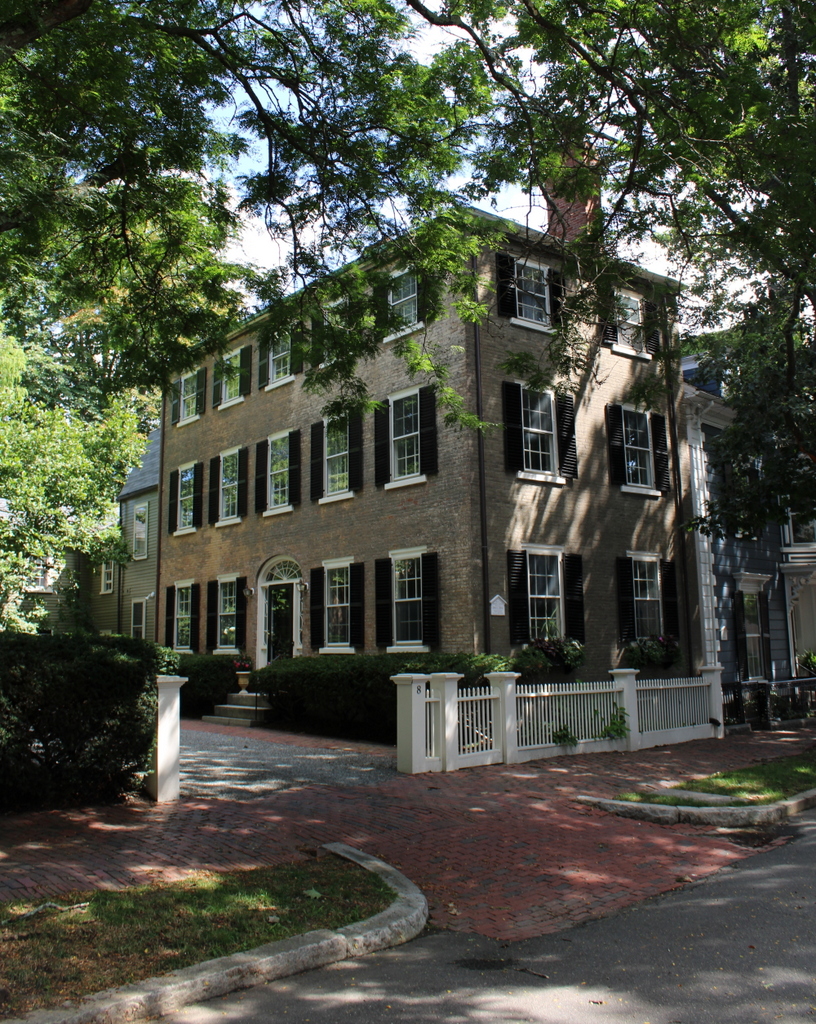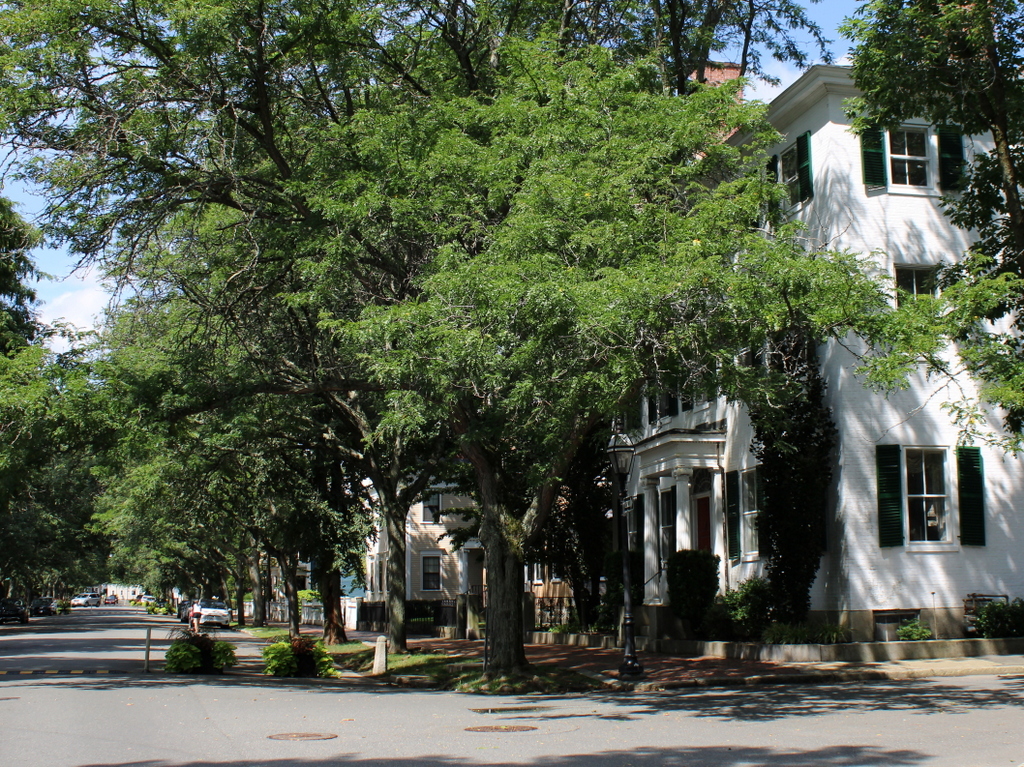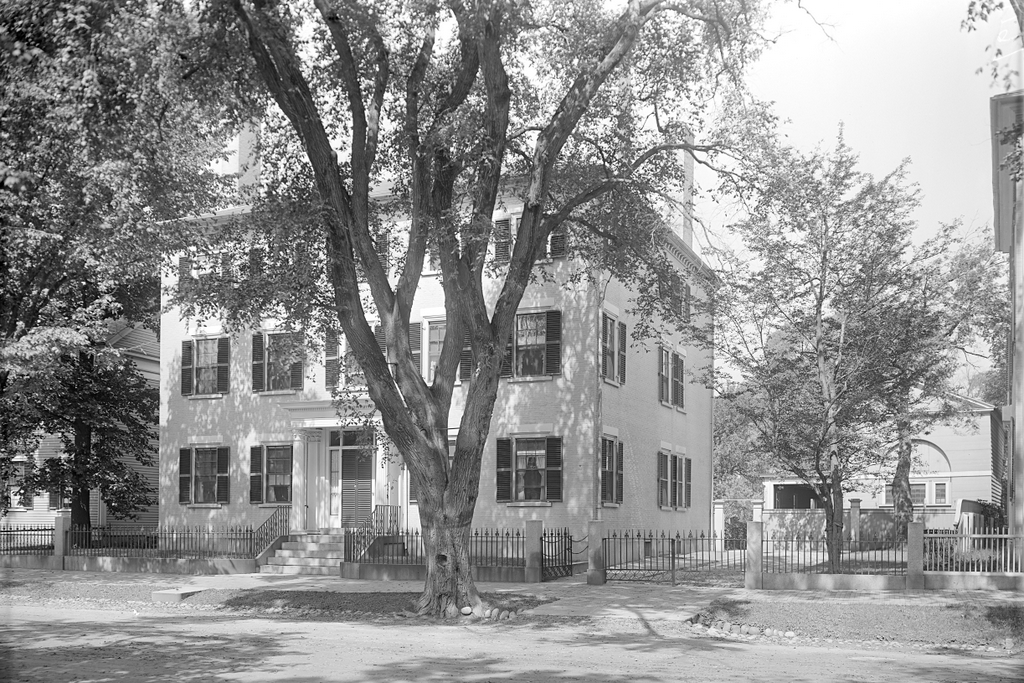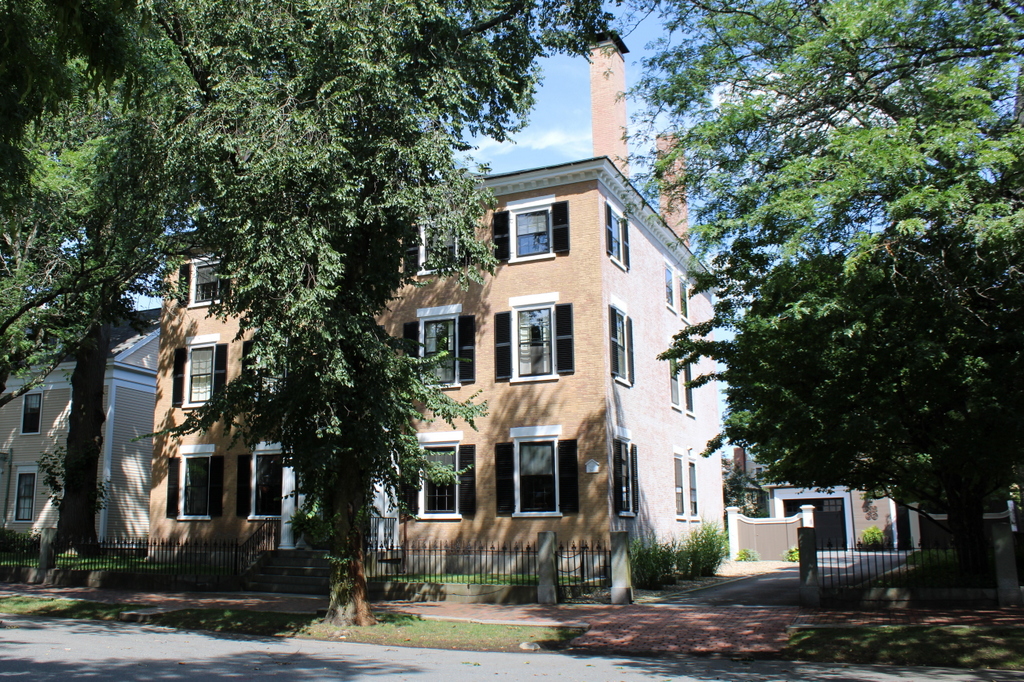The house at 28 Cambridge Turnpike, near the corner of Lexington Road in Concord, around 1900-1906. Image courtesy of the Library of Congress, Detroit Publishing Company Collection.
The house on April 19, 2025:
This house was built in 1828 by John T. Coolidge for his son, Charles Coolidge. However, it is most famous for having been the longtime home of Ralph Waldo Emerson, who purchased the house from the Coolidge family in 1835. He was in his early 30s at the time, and he lived here for the rest of his life, until his death in 1882.
Ralph Waldo Emerson was born in Boston in 1803, but he had Concord roots. His grandfather, William Emerson, had been the pastor of the church in Concord, and lived in the Old Manse until his death in 1776 while serving in the Continental Army. William’s eldest son, William, also became a pastor, serving at the First Church in Boston, and William Emerson Jr.’s son, Ralph Waldo Emerson, likewise continued the family legacy and entered the ministry. He was ordained as pastor of the Second Church in Boston, but he began to struggle with doubts about his faith, especially after his wife Ellen’s death in 1831. He resigned his position at the church a year later, and then spent the next year overseas in Europe.
In 1834, Emerson moved to Concord, where he lived with his grandmother’s second husband Ezra Ripley at the Old Manse. It was there that he wrote some of his early works, including his philosophical essay “Nature,” which laid out many of the tenets of Transcendentalism. Then, in 1835 he married his second wife Lidian and purchased this property as their home. The house had previously been known as “Coolidge Castle” but Emerson renamed it “Bush.”
Over the next few decades, Emerson rose in prominence as one of the leading American philosophers. He was known for his lectures and essays, the most famous of which included “The American Scholar” and “Self-Reliance.” He influenced many other figures in the Transcendentalist movement, including most notably fellow Concord resident Henry David Thoreau. Lidian was also involved in Transcendentalism, particularly on the more practical political and social side of the movement. Among other causes, she was active in reform movements such as abolitionism, women’s rights, and the humane treatment of animals.
From 1841 to 1843, Henry David Thoreau lived here with the Emersons. He was in his mid-20s, about 15 years younger than the Emersons, but he formed a close friendship with both Ralph Waldo and Lidian. This relationship, particularly between Thoreau and Lidian, has led to recent speculation about whether this was a strictly platonic friendship, or whether Thoreau—a lifelong bachelor with no known romantic partners—harbored romantic feelings for Lidian. Either way, the Emersons had a significant influence on Thoreau’s beliefs and writings. A few years after he moved out of the house, he began his famous two-year-long stay in a cabin at Walden Pond, which he built on land that was owned by Ralph Waldo Emerson. Thoreau stayed at the cabin until September 1847, and he then returned to the Emerson house, where he lived until 1848.
The Emersons lived here for the rest of their lives, and they had four children here, three of whom lived to adulthood. Probably the most significant change to the house during their ownership came in July 1872, when a fire started in the attic. It burned the roof, along with much of the second floor, but the rest of the house was saved and it was soon rebuilt. Ralph Waldo Emerson died in 1882 at the age of 78, and Lidian died 10 years later at the age of 90.
The top photo was taken around the turn of the 20th century, when their oldest surviving child Ellen was still living here. She died in 1909, and her siblings subsequently inherited the house. Today, the house is still owned by descendants of the Emerson family, with few changes since the top photo was taken more than a century ago. It is preserved as a museum, and it is seasonally open to the public for tours.


